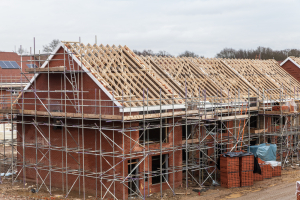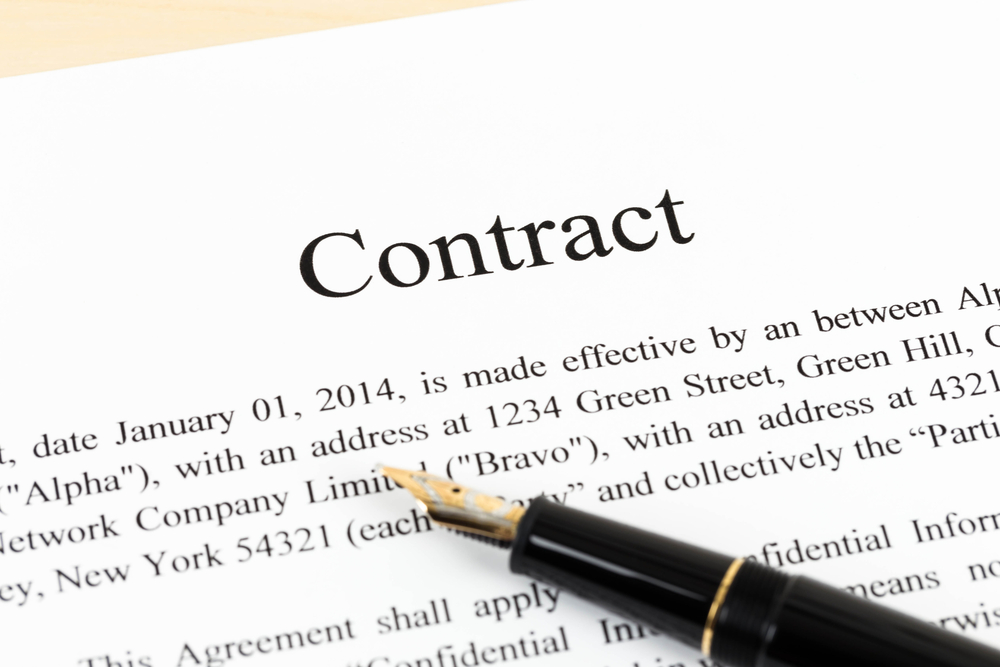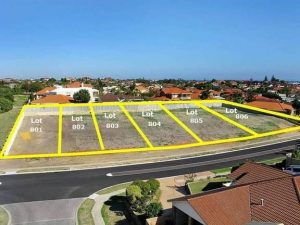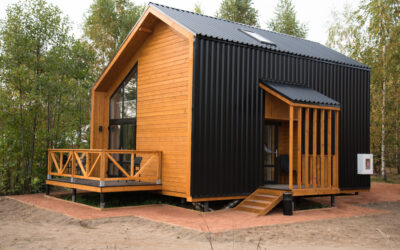What are the tax and investment considerations for a Granny Flat above versus a Tiny Home below? Income Tax Return Reporting - Income Streaming Tiny Homes Tiny home ownership does not have to follow the ownership interest of the underlying property ownership. For...
GST Margin Scheme for Property Developments – How and Why Does it Apply?
GST Margin Scheme for Property Developments
Under the margin scheme, GST is calculated on the sale as 1/11th of the margin. The margin is the GST inclusive sale price less the original purchase price, whereby previously GST was not able to be claimed.

Unit Development under construction
The Margin Scheme is provided for under Div. 75 of the New Tax System (Goods and Service Tax) Act 1999 (GST Act).
Margin Scheme is available on the sale (taxable supply) of real property by –
* selling freehold interest in land
* selling stratum titled units
* granting or selling a long-term lease of 50 years +
Written Agreement
There must be a written agreement between the seller (vendor) and the purchaser for the margin scheme to apply.
The written agreement must be made –
- On or before settlement
Ineligible sales for the Margin Scheme
- Whereby previous purchase of the property included GST which was calculated without previously applying the margin scheme
Example
Bob the property developer registered for GST, bought the land from Ann. Ann charged GST on the land sale to Bob. Bob therefore cannot use the margin scheme when on-selling the land and or the house and land package.
Eligible Sale for the Margin Scheme
The Margin Scheme can only be used where property sales were –
- From a vendor who used the margin scheme to sell to you
- From individuals/entities that were not registered or required to be registered for GST (i.e.) mum & dad selling the family home to a developer.
- The sale is a GST – Free
- Sale of the property development under the GST going concern concessions, provide all previous sales where eligible for the margin scheme (see 4 townhouses on a block – GST Trap)
Example
Peter purchased land from Mary with the intention to build a block of units on. Mary is registered for GST, and there was no written agreement to use the margin scheme on the sale of the land to Peter. As such Peter cannot use the margins scheme on the sale of the units.
Are Tax Invoices required under the GST Margin Scheme?
The Vendor / Seller is not required to issue a tax invoice where a written agreement to apply the margin scheme is stated in the contract of sale.
Written Agreement Requirement
 From 29th June 2005, the written agreement must be made –
From 29th June 2005, the written agreement must be made –
- On or before settlement
- ATO ID 2010/83 – the agreement to apply the margin scheme cannot be revoked after settlement.
The margin on Property held prior to start of GST, 1st July 2000.
- Market Valuation as of the 1st of July 2000 is used as the starting point for the margin scheme.
Example
Bob a GST registered property developer on the 1st March bought a house and land for $500,000 from a mum & dad couple. Later Bob decided not to proceed with his development plans for the site and subsequently sold the property for $600,000. Bob applied the Margin Scheme to the sale.
Under the Margin Scheme, the margin was $100,000 ($600,000 – $500,000). The GST Payable on the margin scheme is $9,010.91 (1/11 of $100,000).
See also GST – Margin Scheme – Tug of War
Note the GST Margin Scheme is not –
- The normal accounting profit on the project, the margin for GST does not allow costs incurred for construction or subdividing land and all associated costs.
- Is not the same as calculating capital gains. It is possible for there to be GST Payable under the margin scheme when there is no capital gain for income taxes. (i.e.) sale of a commercial building (converted house to the medical clinic) without a lease as a going concern, sold after extensive renovations for less than the cost base, however still subject to GST.
Costs not included in the Margin Scheme
All costs after the initial purchase of the property are not included
- All costs associated with the purchase of the development, such as legal fees, stamp duty, registration fees, and transfer costs, related to the purchase
- Development costs – construction work, and subdivision work, however, GST can be claimed separately during the development of each Business Activity Statement.
Example
Bob the GST Registered Builder purchased a property on the 1st of November for $500,000 from a mum and dad couple selling the family home (not registered or required to be registered for GST).
Bob spend the development cost of
- $3,300 conveyance fees, $15,000 stamp duty.
- $55,000 Development Application & Associated Consultants(assume all council fees subject to GST)
- $660,000 construction costs to build units
- $44,000 Selling & Marketing.
Bob at the completion of the development sales of the unit’s complex for $1,540,000, Bob wants to use the margin scheme to reduce the GST on the sales.
What is the Margin for the GST Margin Scheme – ($1,540,000 – $500,000) = $1,040,000
What is the GST Payable under the Margin Scheme – $94,545.45 (1/11th of $1,040,000?)
What GST tax credits can be claimed during the development?
- Nil on the land purchase
- $300 on conveyance
- $5,000 Development Application Costs
- $60,000 building costs
- $4,000 selling costs
- Total GST Claimable during the development of $69,300 (on each BAS)
Property Adjustment on Settlement
On the settlement of a property, it is not usual that there be certain adjustments between the seller & purchase in relation to various council rates, water rates, etc.
Example
Bob the builder sells a house and land package for $550,000, on settlement, there are adjustments for various rates paid by Bob, which the purchaser needs to compensate Bob. Assume there were $1000 in rates paid by Bob that cover the period beyond settlement. The Margin in this case would therefore be ($550,000 + $1,000) = $556,000 less the Bobs purchase price for the land.
What if the purchase price of the property is equal to or less than the ultimate sale price?
- There is no margin, therefore no GST is payable on the sale, however, if the margin scheme is used, the purchaser can still able to use the margin scheme on any subsequent sales of the property.
Applying the Margin Scheme to subdivided land or stratum title units.
GSTR 2006/8 Para 58, allows any reasonable method of apportionment of the underlying land value to be used to calculate the margin.

Example
Lynne a GST registered property developer buys a 2000 square metre block for $300,000. It was decided that the value was uniform per square metre across the overall block of land.
Lynne decides to subdivide the block into 2 lots, 2@ 600m2, and 1@ 800m2.
The land value for the margin scheme has been attributed on a uniform area basis as follows:-
- 600m2 lots = (600/2000 * $300,000) = $90,000 @2 = $180,000
- 800m2 lot = (800/2000 * $300,000) = $120,000
Lynne at the completion of the development sells each lot as a house and land package as follows:-
- 600m2 = $550,000 each
- $800m2 = $770,000
- Total Sales $1,870,000
Lynne’s GST payable under the Margin Scheme would be on each sale:-
- 600m2 = ($550,000 – $90,000)*1/11th = $41,818.18 each
- 800m2 = ($770,000 – $120,000) * 1/11th = $59,090.91




